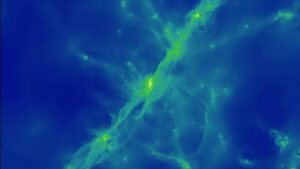
In a paper that made me do math, researchers have shared the results of a remarkable new suite of simulations that explore how galaxies are born, live, and evolve.
Over 160 researchers from 60 institutions ran 100 million computer hours of simulations over eight years.
With just 8,760 hours in a year, or a little more than 70,000 hours in eight years, they essentially used 1,500 computers almost continuously for eight years in the name of doing science.
Three different papers related to this work have been published in The Astrophysical Journal by the Agora Collaboration.
The team finds that to reproduce what we see in the universe, including the number of dwarf galaxies and the presence of disc galaxies in the very early universe, it is important to get the gas distribution right. Prior work has always focused on stars. With this more accurate and complex mass distribution, the more complex universe takes shape.
It also took a lot of work running different models and then rerunning them to make sure everything was right. As one of the lead authors, Santi Roca-Fàbrega, puts it, “To make progress towards a theory of galaxy formation, it is crucial to compare results and codes from different simulations. We have now done this by bringing together competing code groups behind the world’s best galaxy simulators in a kind of supercomparison.”
This is your reminder — science is a group sport, and collaboration is required to win the race toward understanding.
